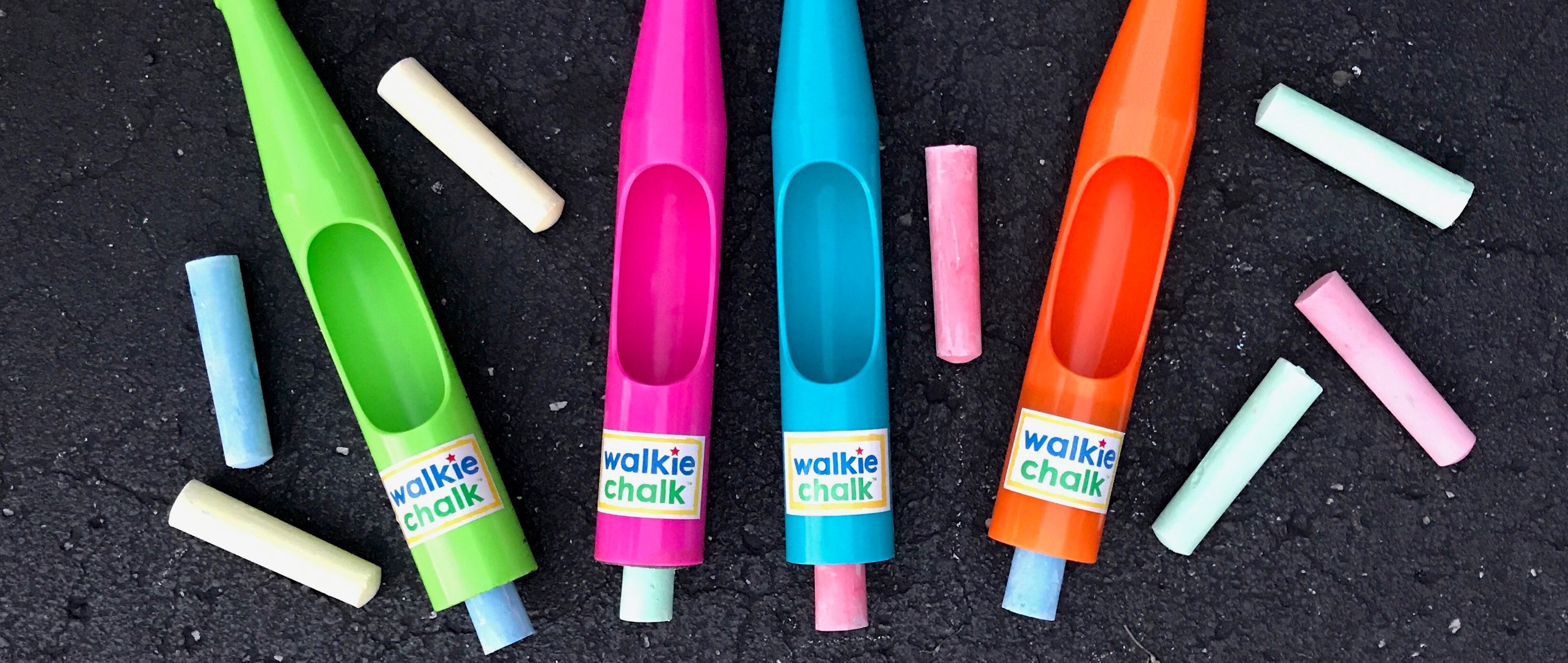Blog — Exploring Nature with kids

Finding Balance: Helping Your Child Navigate a Packed Schedule Without Burnout
Helping Your Child Navigate a Packed Schedule Without Burnout

5 Ways to Get Children with Learning Disabilities Involved with the Arts
Guest Author: Lillian Brooks
If your child has learning disabilities, it’s essential to encourage them to participate in the arts. The arts can improve communication skills, grow self-confidence, and increase fitness levels. Here, the creativity experts at Walkie Chalk present five of the best options for children with learning disabilities.
1. Music
Participating in a music class or learning a musical instrument requires complete focus. As a result, music is ideal for relieving stress, teaching your children to concentrate, and helping them gain a creative outlet.
In addition, a recent survey produced by AARP found music listeners had higher scores for mental well-being, higher levels of happiness, and better cognitive function. In fact, sixty-eight percent of parents that introduced their children to music rated their child’s ability to learn new things as very good or excellent. However, this was only 50% for parents who hadn’t exposed their children to music.
2. Acting
Transferring energy to performing arts can be helpful to an active child, and acting is one of the best options. Your children can gain confidence, a sense of achievement, teamwork skills, and multiple creative skills from acting.
In addition, acting can boost your child’s communication skills. Around 86% of employees state poor communication is the main reason for workplace failures. Therefore, you should promote your child’s communication skills at a young age.
3. Painting and Drawing
Children often enjoy drawing things; when we become adults, we often stop drawing due to our busy adult lives. But drawing can relieve stress and anxiety in adults, so it’s a shame most adults forget about their painting passions.
With that said, painting is excellent for children. It helps them build confidence, develop problem-solving skills, create a shared learning experience, increase brain development, enhance senses, explore color, and convey individual ideas.
You and your child can also get outside to draw using Walkie Chalk. This fun modification to classic chalk drawing makes it easier for adults to play along. Plus, kids with sensory challenges can enjoy drawing without getting chalk on their fingers!
4. Dancing
Young children have so much energy, and dancing is one of the best ways to focus that energy. Dancing can enhance creativity, encourage socialization, increase cognitive development, and boost emotional development.
Dancing is also excellent for helping your child’s physical fitness. It improves their flexibility, overall balance, coordination, muscular strength, heart and lung condition, and spatial awareness.
5. Crafting
You’ll struggle to find a better creative outlet for your children than crafting. It can improve self-confidence, reduce overall stress, decrease anxiety, raise a child’s focus, and grow emotional development.
Crafting is also superb for teaching colors and shapes, encouraging critical thinking, building resilience, and increasing pattern recognition.
Design an Arts Room
By creating an arts room in your home, you and your children can explore the world of art in a comfortable and familiar setting. When designing your arts room, be sure to include plenty of storage for all of your supplies. And be sure to leave plenty of open space for painting, drawing, or whatever other creative pursuits you enjoy.
Not only will an arts room make your home more attractive to potential buyers, but it will also give you and your children a place to relax and express yourself. Keep track of any upgrades by keeping receipts and taking before-and-after photos because this new addition may be a valuable selling feature when you eventually choose to list your house and move.
Start Teaching Children Yourself
Teaching children is incredibly rewarding. You may find a passion for teaching children arts and crafts when you share the benefits with your children. If so, consider teaching your arts and crafts lessons to children of all ages and backgrounds.
You can work as a self-employed teacher, but consider registering your new teaching business as a limited liability company. It’ll offer you more flexibility, less paperwork, and various tax benefits. If you’re not sure how to start an LLC, use a formation service to avoid costly legal fees.
Get Children Involved in the Arts Today
While the arts are great for helping everyone to get in touch with their own creativity, they can be especially fantastic for children with learning difficulties because they give them an outlet in a world that otherwise doesn’t always seem to take their feelings and perspectives into consideration. You may even decide to start your own business teaching art to children!

How to Turn Kids into Outdoor Explorers
Hi Walkie Chalk fans - we have our great friend Denise Long here with a fantastic guest blog! Take it away, Denise!
Outdoor Explorers!
Kids are naturally curious about their surroundings, and the best way to engage that curiosity and their senses is to offer plenty of opportunities to explore. Experts know that exploring nature has a powerful, positive effect on the brain. It also teaches kids to cooperate with others and to think creatively. So invite them to venture outside and experience the natural world’s magic.
Backyard Activities
Take children on a scavenger hunt walk and ask them to find different objects. Give them a simple camera with which to snap pictures of, for example, a bird, a red leaf, a flowering bush, or a yellow car. Set up a water table, fill it with toys and water, and let your kiddo go to town. Or, add a sandbox and hide “treasures” for your explorer to discover. A simple swing hanging from a sturdy tree branch provides hours of entertainment, as well.
Set her up with a set of child-safe binoculars and a magnifying glass. Find an ant trail and put a little crumb of food next to the insects — then watch what happens. Collect flowers and press them between the pages of a heavy book to dry, then use them to make crafts.
Keep in mind that older kids love outdoor play, too. By the time kids reach age 5, they’re still very curious and observant about their world. That curiosity leads to critical thinking and greater understanding. Let them take the lead so they can make discoveries first.
Create a treasure hunt for older kids. You’ll need an end prize and a map with plenty of clues. You could put clues in bottles scattered around the yard or write them on a jigsaw and scatter the pieces. Use invisible ink for a real challenge, or incorporate the natural world and use natural markings such as arrows on trees or ones made with piles of rocks and sticks.
For an even more high-tech treasure hunt, try geocaching. All you need is a smartphone with a GPS app to start, but you can also purchase a GPS unit specifically designed for geocaching. Geocaching involves a set of coordinates which you follow to a cache of hidden treats. Currently, there are more than 1 million web-logged caches scattered throughout the world.
Give a kiddo supplies and they’ll create art. A bucket of sidewalk chalk is perfect for creating a hopscotch game, amazing sidewalk murals, or racecourse for RC cars. Go big with Walkie Chalk®, a supersized sidewalk chalk with a holder that extends up to 36 inches and accommodates standard square and round sidewalk chalk. This tool alleviates the need to bend or sit down on the ground to draw — it’s perfect for parents, grandparents, kids, and people with disabilities.
Swimming and Pool Safety
We are attracted to water — it makes us happier, healthier, and brings us peace. Ask any kid and he’ll tell you that water’s perfect for splashing, jumping, and swimming. But a mix of water and children can be deadly. Nearly 1,000 children drown each year, and it’s the second-leading cause of accidental death for people ages 5 to 24.
To keep young swimmers safe, teach them to follow the rules. Keep your phone and other distractions away when you’re watching a younger, inexperienced swimmer. Don’t rely on swimmies, pool noodles, or other non-life saving flotation devices to protect your kiddo. Stay in the water with your child or put him in a Coast Guard-approved life jacket — or do both. Have older kids use the buddy system. Also, get your child swimming lessons. The American Academy of Pediatrics (AAP) recommends starting lessons by age 4. Set and enforce pool rules, including no swimming without adult supervision, no running, no diving into the shallow end, no pushing people in, and no dunking.
You don’t need expensive supplies to create a world of magic. Blankets and deck furniture transform into castles. Gardens become homes to fairy creatures. Cardboard boxes transmogrify into spaceships. Give kids space to create and watch their imaginations soar.
Photo Credit: Pixabay.com
